NENDO-MICHI of JIN KATAGIRI ~NIPPON local the soul of clay~ vol.10


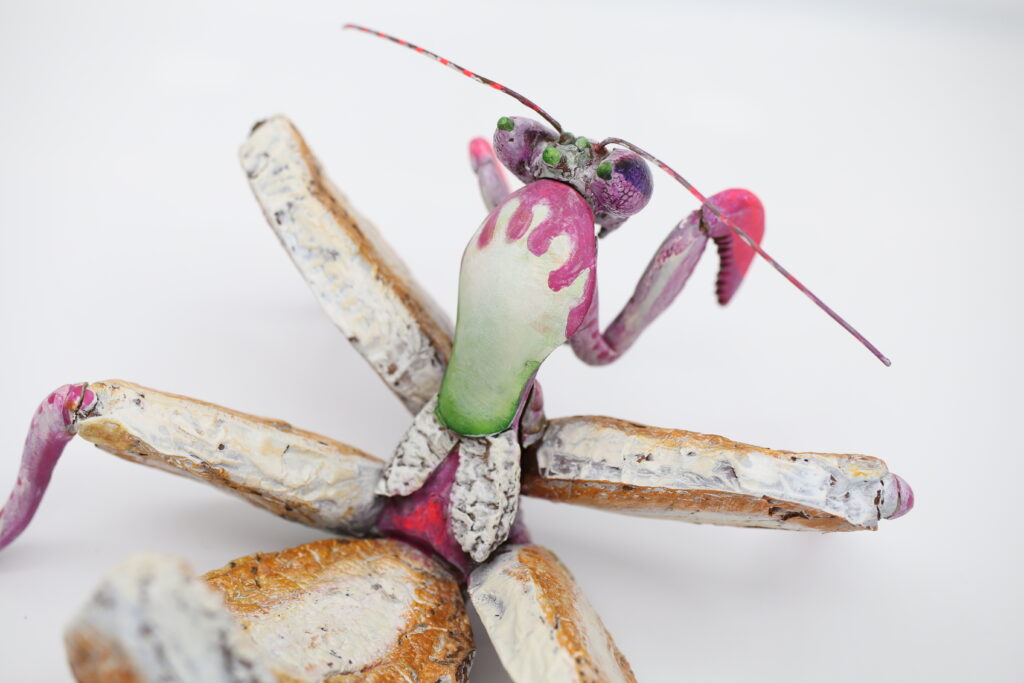
法量:縦×横幅×奥行=130×200×180(mm)
材料:エポキシパテ、スカルピー、笹かまぼこ(複製)
Legal amout : height × width × length =130×200×180(mm)
Materials : Epoxy putty, Sculpey, Sasa-kamaboko (replica)
仙台は、牛タンやずんだ餅など、名物が多くて迷ったのですが、前々から作りたかった『ハナカマキリ』の画像を検索したら、お尻が笹かまぼこそっくりだったので「これしかない!」と。
There are many specialties in Sendai, such as beef tongue and zunda rice cakes, and I was not sure which one to choose, but when I searched for a picture of a “orchid mantis,” which I had wanted to make for a long time, I found that its buttocks looked just like a “Sasa-kamaboko (Bamboo-leaf shaped fish cake)”, so I thought, “This is it!”.

で、笹かまぼこを買って友達に型取りしてもらおうとしたら、「濡れてる素材はどうなるが分らない」と言われたんだけど強行しました。苦労の甲斐あって、いいシワ具合になったと思います。それを熱いうちに曲げて、カマキリ感を出しました。クリアランス的に難しいと思いますが、お尻の部分を小さい笹かまケースにしたかったですね。
So I bought some sasa-kamaboko and tried to get my friend to mold it for me, but he said he didn’t know what would happen if the material was wet, but I had to do it. I think it was worth the effort, and I think I got a nice wrinkle. I bent it while it was still hot to get the mantis look. I think it is difficult to make room for it, but I wanted to make the butt part a small sasa-kamaboko case.
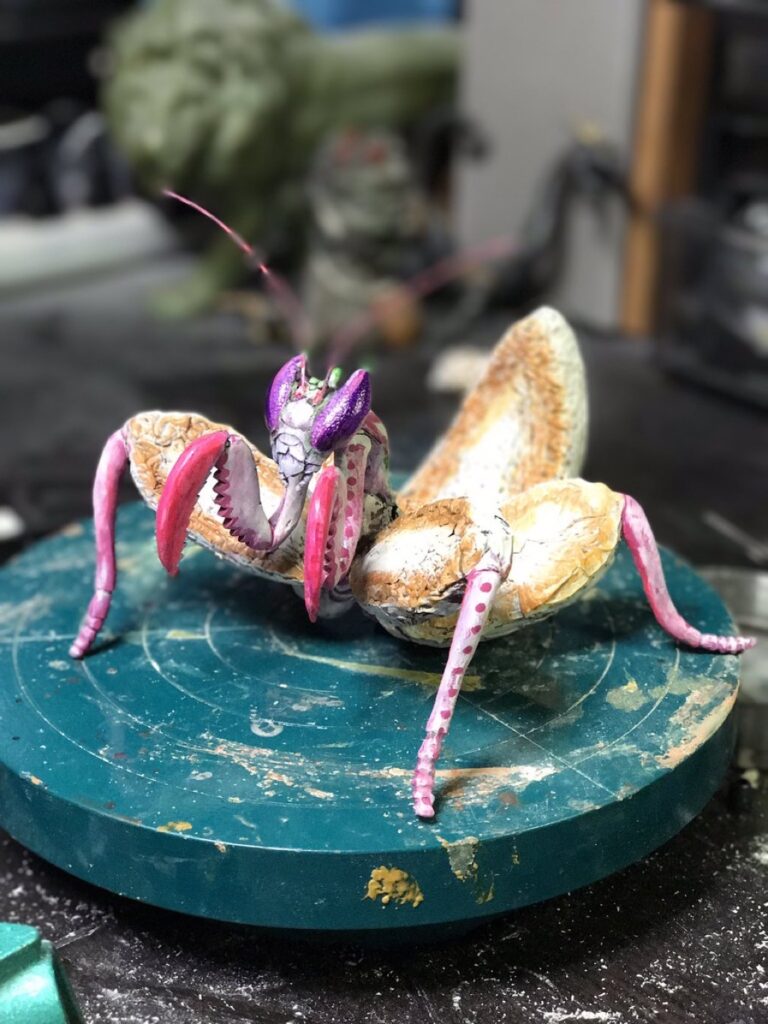
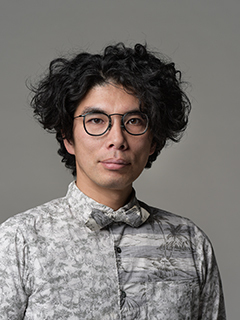
片桐 仁
1973年11月27日生まれ / 埼玉県出身 / 多摩美術大学卒業
ドラマを中心に舞台、映画、ラジオなどで活躍中。近年の主な出演作は「99.9%-刑事専門弁護士-」(TBS)、「あなたの番です」(NTV)、「NHK 連続テレビ小説 エール」(NHK)などがある。
俳優業の傍ら粘土創作活動も行い、2016年から2018年までは「片桐仁不条理アート粘土作品展 ギリ展」にて全国ツアーを開催。2019年は初の海外個展を台湾で開催している。
Jin Katagiri
Born November 27, 1973 / Born in Saitama Prefecture / Graduated from Tama Art University
Active in the stage, movies, radio, etc., mainly in TV dramas series. Major appearances in recent years include “99.9% -Criminal Lawyer-” (TBS), “Your Turn to Kill” (NTV), and “NHK Morning drama series Yell” (NHK).
In addition to acting, he also creates clay, and from 2016 to 2018 he held a national tour at the “Jin Katagiri Absurdity Clay Art Exhibit Giri Ten.” In 2019, he is holding his first overseas solo exhibition in Taiwan.
宮城県は本州の東岸にあり東京の北に位置しています。東は太平洋に面し、豊かな漁場と日本三景の一つ松島をはじめとする風光明媚な観光地があります。海岸線は島を含めて約828kmに及び中央部に突出する牡鹿半島によって南北に両分され,北は複雑な屈曲をもつ三陸リアス式海岸,南は一部松島湾をのぞいて平坦な砂浜海岸により仙台湾を形成されています。西には蔵王・船形・栗駒などの山々が連なり四季折々の姿を見せ、中央部には有数の穀倉地である仙台平野が広がります。県庁所在地である仙台市は、東北地方の中心的な都市でもあり毎年8月になると東北四大祭りの一つ、仙台七夕まつりが有名です。
Miyagi Prefecture is located on the east coast of Honshu, north of Tokyo. Facing the Pacific Ocean to the east, the prefecture has rich fishing grounds and scenic tourist spots such as Matsushima, one of the three most scenic spots in Japan. The coastline, including the islands, stretches about 828 km and is divided into north and south by the Oshika Peninsula, which juts out in the center, forming the Sanriku Rias coast in the north and Sendai Bay in the south with flat sandy beaches except for Matsushima Bay. To the west are the mountains of Zao, Funagata, and Kurikoma, which show their seasonal beauty, and in the center is the Sendai Plain, one of the largest granary areas in Japan. The city of Sendai, the capital of the prefecture, is also the center of the Tohoku region, and is famous for the Sendai Tanabata Festival, one of the four major festivals in the Tohoku region, held every August.
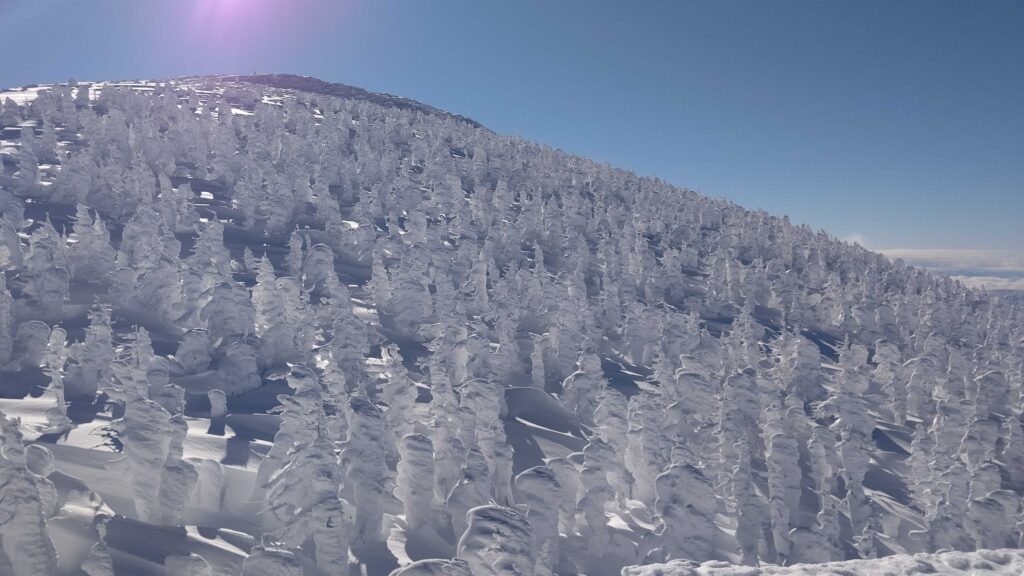
THAT IS GOOD「絶景×DJ」の連載の中で、宮城蔵王で撮影した風景もあるのでぜひこちらをご覧ください。
In the series of THAT IS GOOD “Zekkei x DJ,” there are some scenes taken in Zao, Miyagi, so please take a look here.
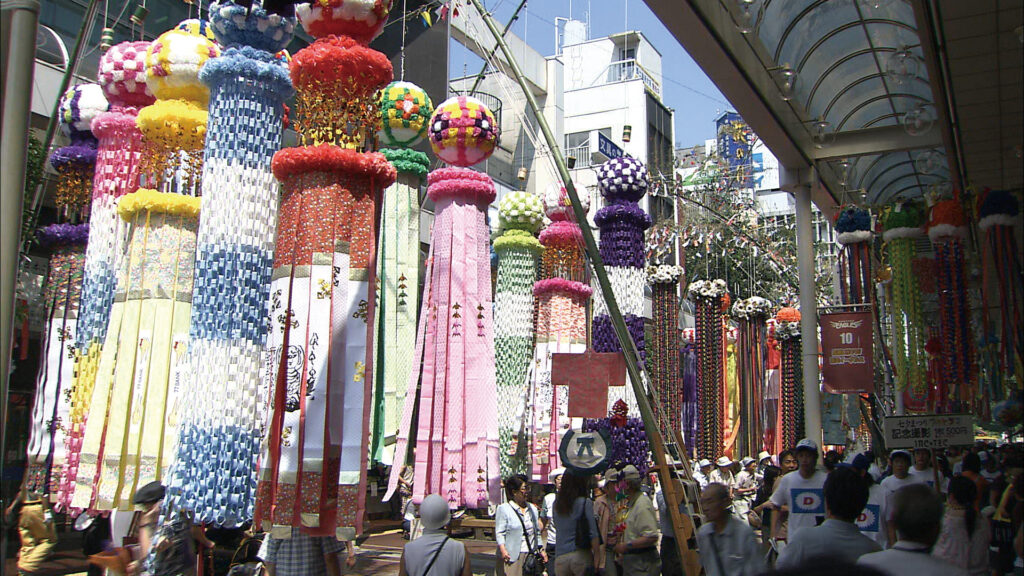
仙台七夕まつりは、古くは藩祖伊達政宗公の時代から続く伝統行事として受け継がれていて、日本古来の星祭りの優雅さと飾りの豪華絢爛さを併せ持つお祭りとして全国に名を馳せています。
The Sendai Tanabata Festival has been handed down as a traditional event since the days of the feudal lord Date Masamune, and is famous throughout Japan for its combination of the elegance of Japan’s ancient star festival and the splendor of its decorations.
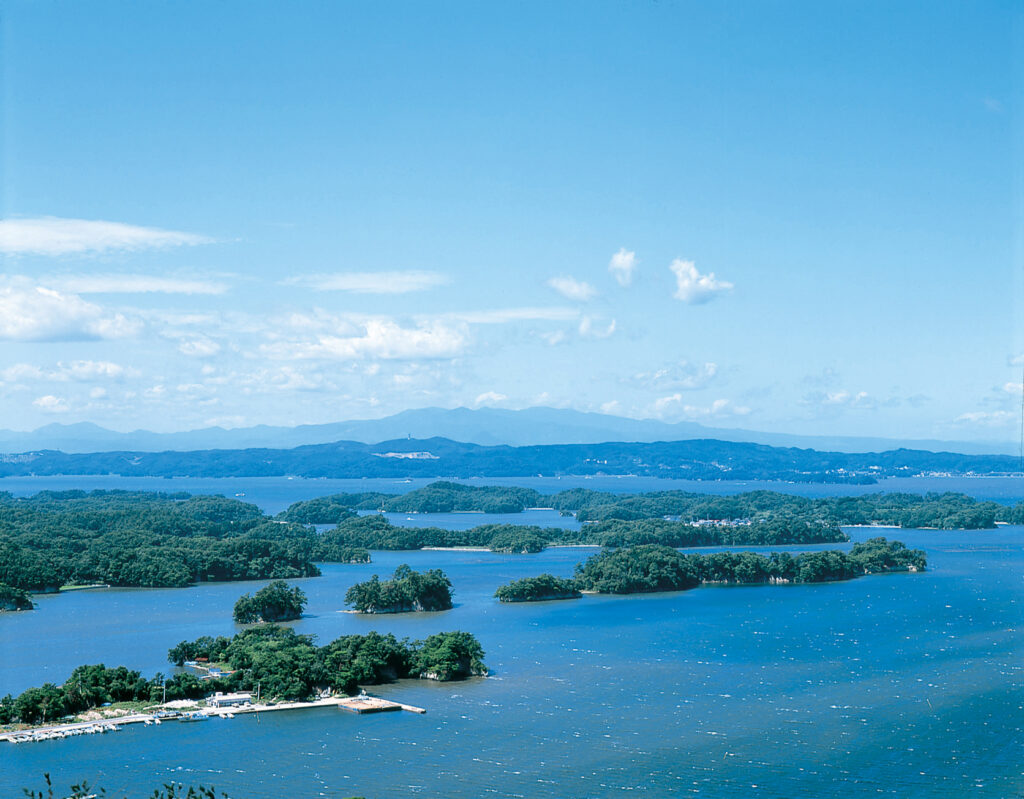
古くから景勝地として親しまれていた松島(宮城県)、天橋立(京都府)、宮島(広島県)が「日本三景」は、江戸時代初期に林春斎が「日本国事跡考」で記し、それ以来日本三景として親しまれています。
Matsushima (Miyagi Prefecture), Amanohashidate (Kyoto Prefecture), and Miyajima (Hiroshima Prefecture) have been known as the “Three Views of Japan” since the early Edo period, when Shunsai Hayashi wrote about them in his book “Nihon Koku Joseki Ko”.
「笹かまぼこ」のご紹介前に、かまぼこの歴史からお話しします。
かまぼこは、日本人が発明したオリジナルの食品だそうです。蒲(がま)の穂や鉾(ほこ)の形に似ているので、蒲鉾という名前になったと言われています。
Before introducing ” Sasa-kamaboko”, let me tell you about the history of kamaboko.
Kamaboko is said to be an original food invented by the Japanese. It is said that the name “kamaboko” came about because it resembles the shape of a common cattail or a spear.
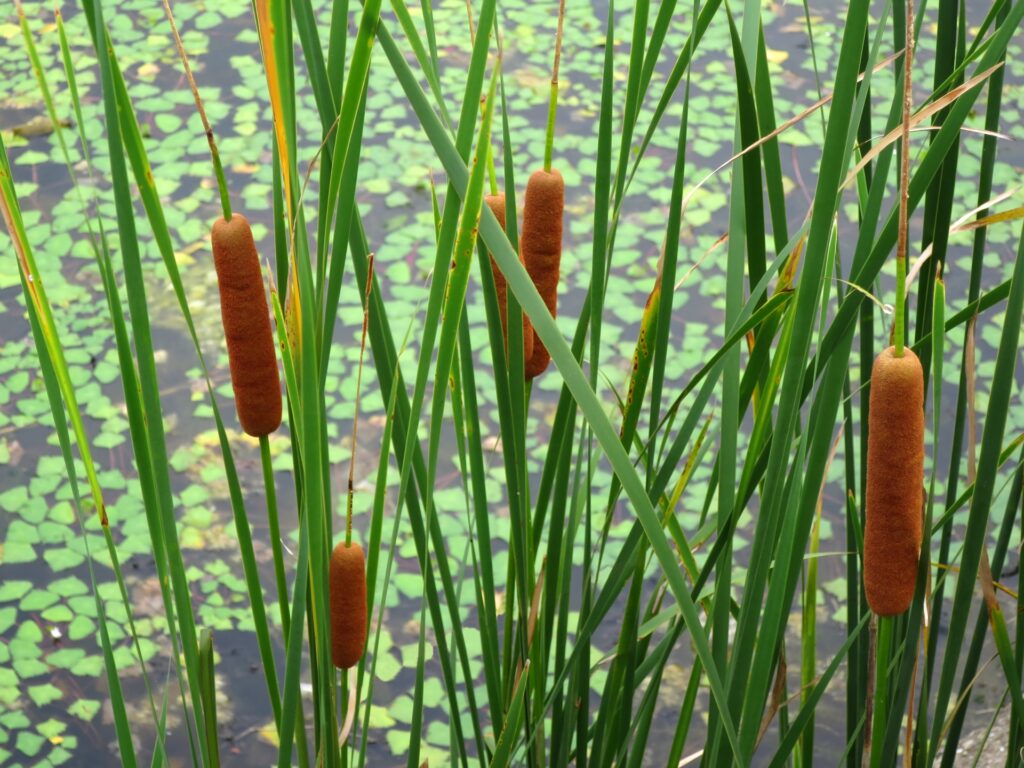
笹かまぼこの歴史はとても古く、なんと平安時代(1115年)に描かれた「類聚雑要抄(るいじゅうぞうようしょう)」という巻物に登場しています。
The history of sasa-kamaboko is very old, dating back to the Heian period (1115), when it appeared in a text scroll called Ruiju Zoyosho.
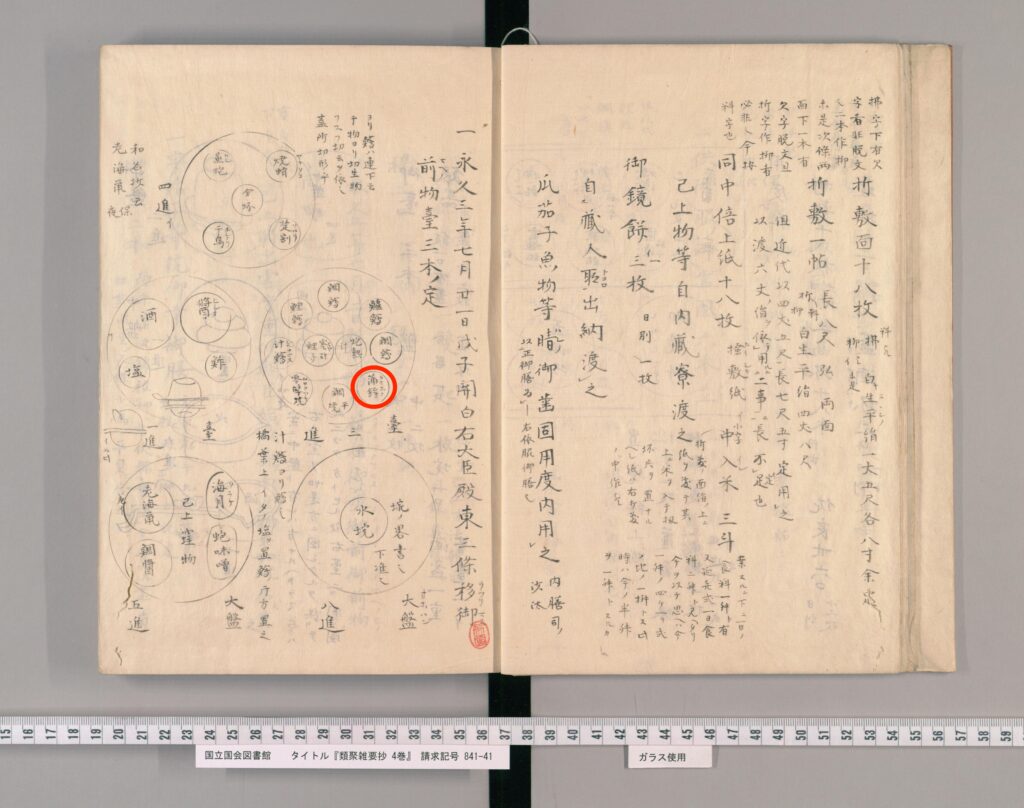
昔は、御馳走・贈答品・縁起のよいものとして食されていたそうが江戸時代以降に商品として販売されるようになり全国へ広がっていったとのことです。
海にぐるりと囲まれた島国日本は、全国各地その地域で漁れる魚を使った多種多彩なかまぼこが作られるようになったそうです。
In the past, kamaboko was eaten as a treat, a gift, or a good omen, but since the Edo period (1603-1868), it has been sold as a commodity and has spread throughout Japan.
Surrounded by the sea, Japan is an island nation, and many different types of kamaboko are made from fish caught in each region of the country.
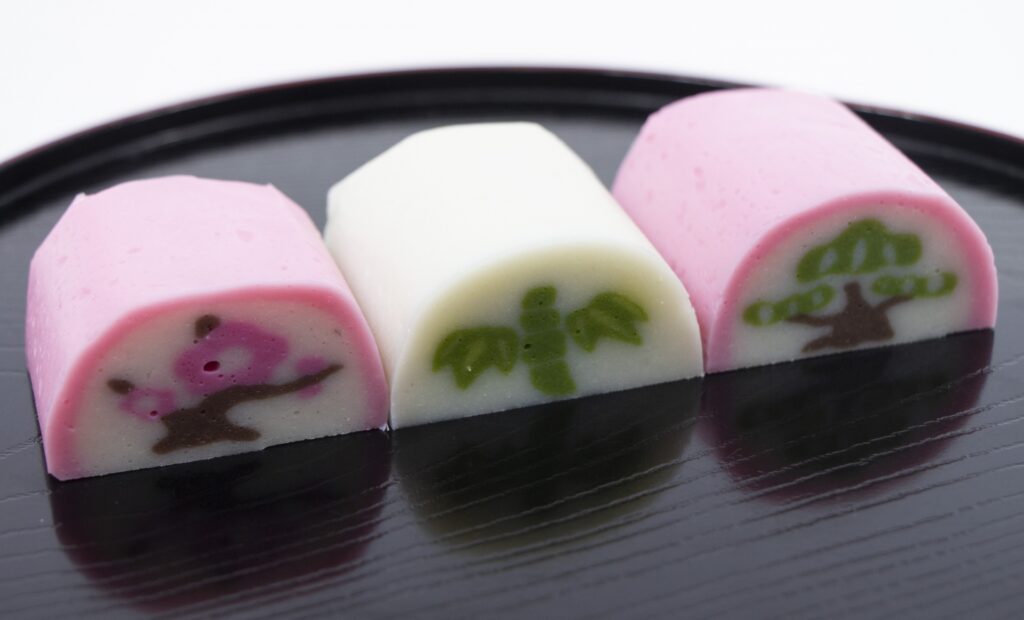
宮城県は、世界三大漁場と言われている「金華山・三陸沖漁場」を有していて、全国2番目の漁獲量を誇っているそうです。昔から鯛やヒラメ、鮭が豊富に獲れたが、現在のように冷凍保存の技術がなかったので大漁のときにどうやって保存するのかが問題だったと。そこで、解決策のひとつとして誕生したのが、白身魚をすり身にして竹に塗りつけて焼く「かまぼこ」に加工することだったとのことです。明治の初めの頃、すり身にして手の平でたたき、笹の葉の形に焼いたことが、笹かまぼこのルーツになったと言われているそうです。
明治・大正の頃までは、「ベロかまぼこ」「木の葉かまぼこ」「手の平かまぼこ」などとも呼ばれていたそうです。笹や竹が古来より生々発展のイメージを持ち、瑞々しくゆかしいものとして昔から愛されてきたことや、仙台にゆかりのある伊達家の家紋である竹にちなんで、昭和になり仙台の老舗“阿部蒲鉾店“が、「笹かまぼこ」と呼ぶようになり、旧仙台藩地域で次第に名称が統一されていったそうです。今では「仙台名物・笹かまぼこ」として全国でも有名な一品です。
Miyagi Prefecture has the Kinkasan and Sanriku offshore fishing grounds, which are said to be one of the three largest fishing grounds in the world, and boasts the second largest catch in Japan. They have always had an abundance of sea bream, flounder, and salmon, but they didn’t have the technology to freeze and preserve them as we do today, so the problem was how to preserve them when there was a big catch. One of the solutions was to make fish paste from white fish, coat it on bamboo, and bake it as kamaboko. At the beginning of the Meiji era (1868-1912), the fish was ground into fish paste, beaten with the palm of the hand, and baked into the shape of a bamboo leaf, which is said to be the origin of sasa-kamaboko.
Until the Meiji and Taisho periods, it was also called ” Bero-kamaboko,” “Konoha-kamaboko,” or “Tenohira-kamaboko”. Sasa(bamboo leaf) and bamboo have been loved since ancient times for their freshness and elegance, and for their image of continuous development.Then, in the Showa period (1926-1989), the long-established Abe Kamaboko Store in Sendai started to call it “Sasa-kamaboko” after the bamboo, the family crest of the Date family, which is related to Sendai, and the name was gradually standardized in the former Sendai domain. It is now famous throughout Japan as “Sendai’s specialty, sasa-kamaboko”.
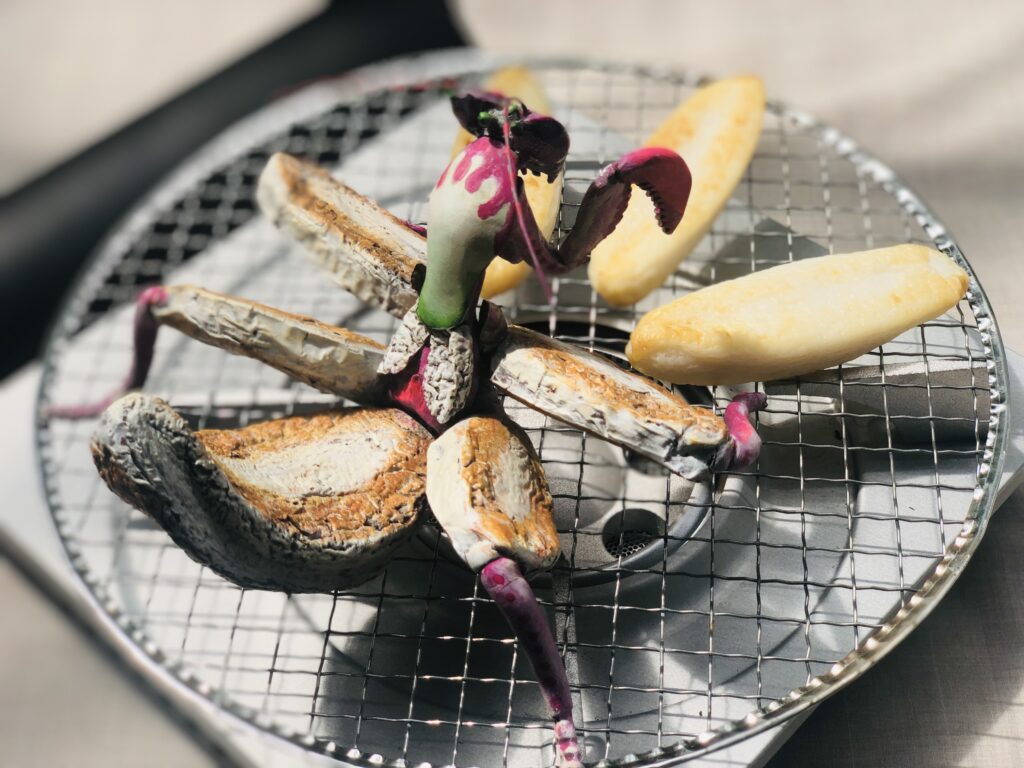
参考文献:
阿部かまぼこ店:https://www.abekama.co.jp/
紀文:https://www.kibun.co.jp/index.html
References :
Abe Kamaboko Store:https://www.abekama.co.jp/
Kibun:https://www.kibun.co.jp/index.html
仙台のご当地グルメの代表といえば「牛タン」が浮かんできます。2017年イオンモール名取でギリ展を開催したときにも堪能させていただきました。本場でいただく牛タンは、一味も二味も美味しく感じます。目の前に、塩胡椒して漬け込まれた牛タンの塊がドーンと置いてありました。注文が入るとそこからどんどん炭火で焼かれていきます。
Gyu-tan (beef tongue) comes to mind as a representative of Sendai’s local cuisine. We enjoyed it when we held a Giri exhibition at Aeon Mall Natori in 2017. The beef tongue that you get in the real place is one or two tastes more delicious. In front of me, there were chunks of beef tongue that had been marinated in salt and pepper. As soon as an order is placed, it is grilled over the charcoal fire.
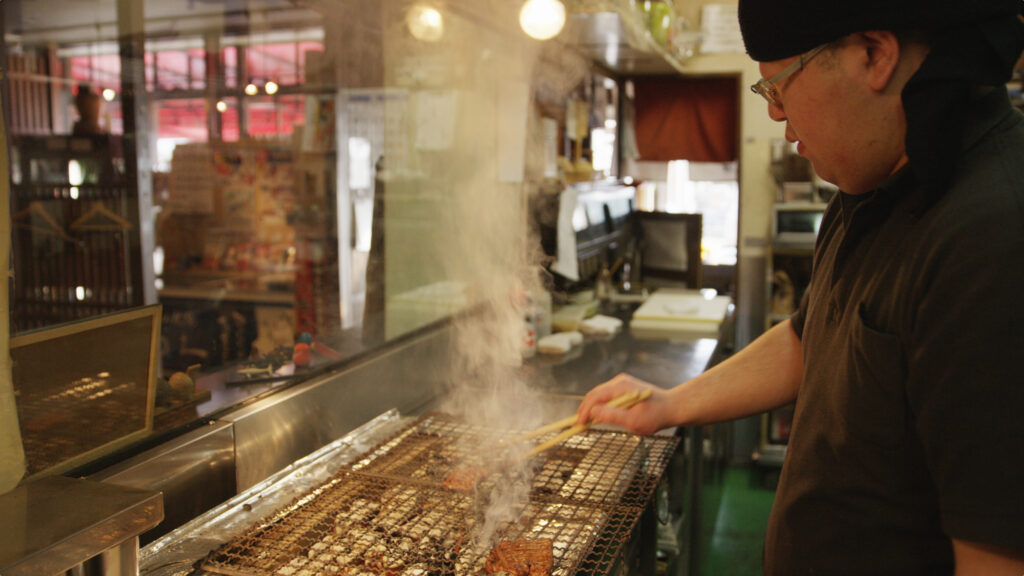
さて、この牛タン焼きの牛は仙台が名産地ではなかったそうです。では何故仙台を代表するご当地グルメにまで発展したのか?!
それは、昭和23年(1948年)「味太助」の初代、佐野啓四郎氏(故)が牛タン焼きの専門店を開いたことから始まるそうです。なので、仙台が発祥地とされています。オープン当初は一部の愛好者が珍味として食べる程度だったそうです。ところが、高度成長期(1950年代〜1970年代)に入り、転勤や単身赴任者で仙台に来るサラリーマンが増えていき、彼(彼女)らがランチや夜の街で美味しい牛タン焼きに出会っていった。そして、東京に戻った彼らの口コミでどんどん牛タンの評判が広まっていったそうです。この頃は、地元仙台の人々は牛タン焼きを食べる機会は少なかったとも言われています。さらに、牛タンがヘルシーであるとマスコミでも話題となっていったそうです。その流れに乗って新しい牛タン焼きの専門店ができたり、お土産売場で販売されるようになったりして、「仙台名物の牛タン」に発展したそうです。
Well, Sendai was not the birthplace of this cow of grilled beef tongue. So how did it come to be one of Sendai’s most popular local delicacies?
It all started in 1948 when Keishiro Sano (the late), the first owner of ” Aji-Taisuke”, opened a restaurant specializing in grilled beef tongue. So Sendai is said to be the birthplace. When it first opened, it was only eaten as a delicacy by a few enthusiasts. However, during the period of rapid economic growth (1950’s to 1970’s), more and more businessmen came to Sendai for job transfers or to work alone, and he (or she) encountered the delicious beef tongue yaki for lunch or at night on the streets.When they returned to Tokyo, the reputation of the beef tongue spread by word of mouth.It is said that at that time, local Sendai people did not have many chances to eat grilled beef tongue.In addition, gyutan became a hot topic in the media for its healthfulness.This trend led to the establishment of new restaurants specializing in grilled beef tongue and the sale of beef tongue at souvenir shops, and it became a Sendai specialty.

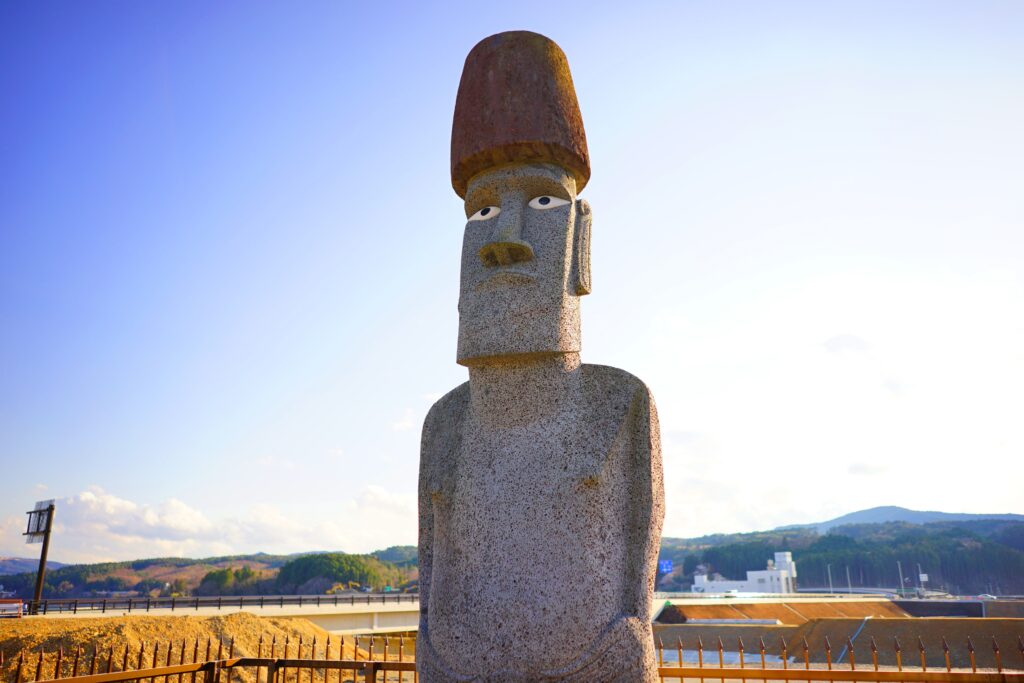
ササカマキリが誕生したイオンモール名取でのギリ展を思い出しました。イオンモール下田(青森)から南下してイオンモール名取での連続開催でした。なので、自宅(神奈川)に戻らずにそのまま仙台に移動してギリ展を運営していました。仙台のウィークリーマンションで初めてお米を炊いた時にご飯が美味しくてびっくりしました!同じお米(青森で食べていたもの)なのに味が違う! お水がおいしいんですね。「杜の都・仙台」といいますが、「お水がおいしい仙台」が私の印象です。さて、番外編ですが前回のモアイでチラッと紹介した宮城県南三陸のモアイの写真を入手しました。片桐さんのモアイフォンの兄弟のような表情でしたので、こちらでご紹介します。
It reminded me of the Giri exhibition at AEON MALL Natori, where the Sasa Mantis was born. It was a series of exhibitions held at AEON MALL Natori, going south from AEON MALL Shimoda (Aomori). So instead of returning to my home (Kanagawa), I moved directly to Sendai to run the Giri Exhibition. When I cooked rice for the first time in my weekly apartment in Sendai, I was so surprised at how good the rice tasted! It was the same rice (that I had in Aomori) but it tasted so different! I guess the water is good. It is called “Sendai, the City of Trees,” but my impression of Sendai is that it has delicious water. Now, as a side note, I got a photo of the moai in Minamisanriku, Miyagi Prefecture, which I briefly introduced in the previous moai. It looks like the brother of Mr. Katagiri’s Mo iphone, so I would like to introduce it here.
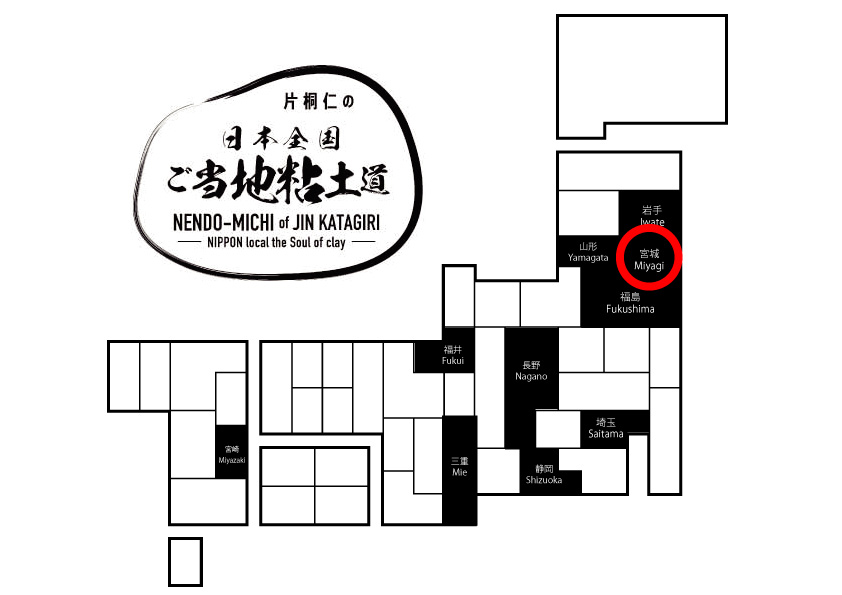
文:THAT IS GOOD 編集部 藤田
TEXT:THAT IS GOOD editorial department Fujita